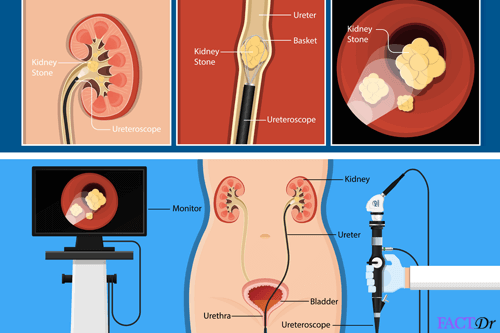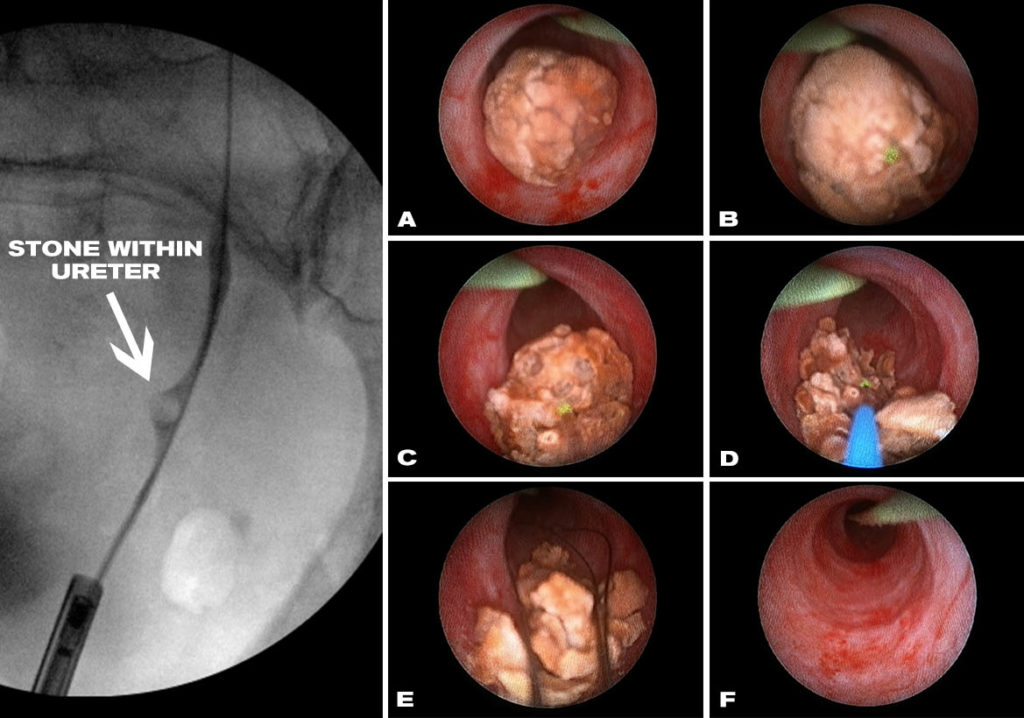What Is Ureteroscopy?
If you have pain when you pee or possibly kidney stones, your doctor may want you to have a ureteroscopy. It’s a procedure to find — and, in some cases, fix –problems in your urinary tract.
When Would I Get One?
A ureteroscopy is usually done when you have kidney stones in your ureter.
Kidney stones are pebble-like objects made of minerals and salts found in urine. They form in a kidney, but can move down the ureter.
A urologist (a doctor who specializes in diseases of the urinary tract) may also recommend a ureteroscopy if they suspect a polyp, tumor or abnormal tissue somewhere in your urinary tract.
The doctor can also use the special scope to remove a stone, polyp, or a piece of tissue (a biopsy) for lab tests.
You may also get other tests if your doctor thinks you may have a urinary tract infection or a related problem. Some of them include:
During ureteroscopy, your doctor inserts a thin, flexible scope into your bladder and ureter (the tube that carries urine from your kidneys to your bladder). This way they can look for kidney stones or other signs of trouble.
- Urine test to diagnose possible infections.
- CT scan to diagnose kidney stones and identify their size and location.
- MRI to provide detailed images of your kidneys, bladder, and other internal organs.
Who Needs a Ureteroscopy?
If you have undiagnosed urinary tract problems, such as urine blockage, a ureteroscopy can help identify the problem.
When you see a doctor because it hurts to pee and you’re not going as often as you should, you may or may not need this procedure. It will depend on your symptoms and what other tests show.
Doctors sometimes use ureteroscopy as part of shock wave lithotripsy, a treatment to break up kidney stones. This is most helpful for:
- Women who are pregnant
- People who are very overweight
- People with blood-clotting problems.



Benefits and Risks
Ureteroscopy is an effective way to do several things. For example, it lets your urologist:
- Get a very clear view of the urinary tract
- Remove or break up stones
- Take out suspicious-looking tissue
How Do I Prepare?
You don’t have to do a lot to get ready for a ureteroscopy. You’ll need to pee before the procedure. Your doctor or a nurse will tell you when.
You should also get instructions about how long before the surgery you need to stop eating, drinking and taking some medicines. This is very important if you take blood thinners to reduce your risk of blood clots.
What Happens During a Ureteroscopy?
Once the anesthesia takes effect and you’re asleep, your urologist will insert the tip of the ureteroscope into your urethra (the tube through which urine passes out of your body).
